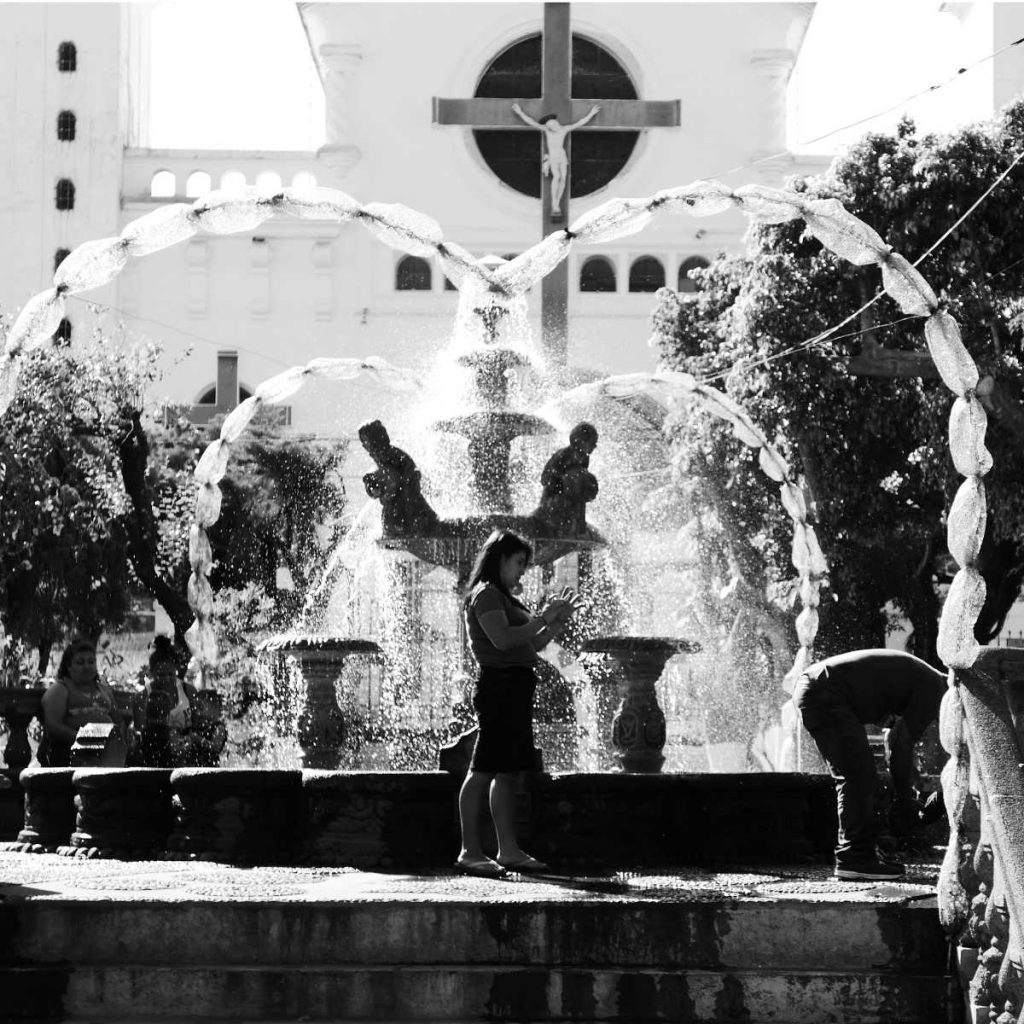In whichever direction I look there are mountains. It is february in Guatemala and it ought to be colder. But instead me is enjoying the sun on a rooftop in volcano heartland, and for the first time in years I catch myself with the realization how much I really like to do ab-so-lutely nothing.
Nothing is of course still subjective. A regular day in Xela, the city which was providing the magnificent surrounding views, would still involve several kilometres of walking through town. But it would also involve healthy breakfasts and lunches at Monte Alto. It would also include even healthier amounts of coffee. I even managed to sit in the Parque America, the central square, with an e-book and see life pass by in slow-motion. Elderly people feeding the pigeons, kids playing, tourists reading. Did I mention I can rarely find the peace to read a book?
Artform
How often in modern 21st-centrury life do you find the peace of mind to switch off and do nothing? It is an underestimated artform, because continuous impulses from your smartphone, earphone or city sounds are assaulting your quietness.
It is this art of doing nothing which I discovered, or rediscovered, in Central America. Somehow there is a more gentle flow of life here. Yes, traffic can be annoying because it is loud and suffocating. But especially in smaller places, once you reach the central square of all these neatly organized grid-like towns, there is a sense of calmness taking back control.
[two_fourth_last]It wasn’t only in Xela. Going down to El Salvador, in the northern flowerful colorful regions, I found peace in Juayua.
There wasn’t much to do in the village, and that in the end seemed to be the entire point of it. Enjoy breakfast on the patio of the hotel. Stroll along the cobblestones, school classes running around doing their sports exercises on the streets. Grab a sandwich and sit down in Parque Central. And go back and enjoy the patio again.[/two_fourth_last]
Peace
I never thought I would find that kind of peace with and within myself again. But we need it. To digest, and to be creative. I am an avid reader of the books of Steven Berlin Johnson.
[four_fífth_last]The American technology writer in his recent Farsighted quotes research done in the 80s. It shows that our brain – when we think we are resting – is actually the most active. It is one of the distinct qualities of human brains to be creative, to connect the dots of all impressions we get into new patterns, new ideas, new meanings, new wisdom. That is actually happening when we think about nothing and give our brains some supposedly time off.[/four_fifth_last]
It’s not a coincidence that only in Central America I was finally able to structure my thoughts into words into my personal mission. For that I first needed time and peace of mind to read Johnson’s book about long-term decision making, time to read another book about finding one’s personal mission, and time to let my mind flow freely on the beach of El Tunco and beyond to distill all these ideas and thoughts into some coherent paragraphs.
Breaking up routines
That’s the beauty of traveling, of breaking up your routines. We are in Groundhog Day mode at home, always repeating ourselves and our activities and our patterns and our flaws and strengths.
When we are on the road, nothing is as usual. There is another book of Steven Berlin Johnson that describes this perfectly. ‘When I moved from the east coast to the west coast’, he writes, Every little thing I needed to do, from taking public transport to going to the supermarket, required an effort. Life had become at least twice as intense.’
That’s also a beautiful metaphor for the art of traveling. It makes all your experiences much more intense and memorable, because they require a conscious effort. There is no routine. Which creates voids in your daily life, to digest what happened and to think about what the future could bring.
Slow heartbeat
So that’s why I was sitting there in the sun chair on a roof in Xela, in between the mountains. That is why I was going barefooted, deliberately without headphones to avoid any additional impulses, from Punta Zicatela beach to Puerto Escondido. Several times in a week.
That is why I explored every inch of the Parque Central in Esteli, in the Nicaraguan northern highlands. Apparently no one stays for a week there, but I did. And the same pleasant slow heartbeat of village life was to be heard in nearby Jinotega. Or in down-to-earth Quepos in Costa Rica, where the buses passing by on their way towards nearby Manuel Antonio national park were the only source of noise. Except of course for the sound of the sea, the sound of the ocean.
Spirit Of Eden
We have gotten so used to impulses, to distractions, that we are almost scared to find periods of quiet where we actually can and have to psychologically look in the mirror. It is no coincidence in the lonely quiet evening hours in Central America, sitting in my bed, I finally discovered the album Spirit Of Eden by Talk Talk.
It became the soundtrack of the first trip. Because the entire album revolves around playing with silence, with building up tension by taking lots of time. ‘Spirit Of Eden can’t be consumed as background noise’, singer Mark Hollis once explained. ‘It deserves and needs your fullest attention, to completely surrender the music and take in the spaces of quietness it provides.’ Just like the art of traveling. Couldn’t have said it myself better. Amen.

